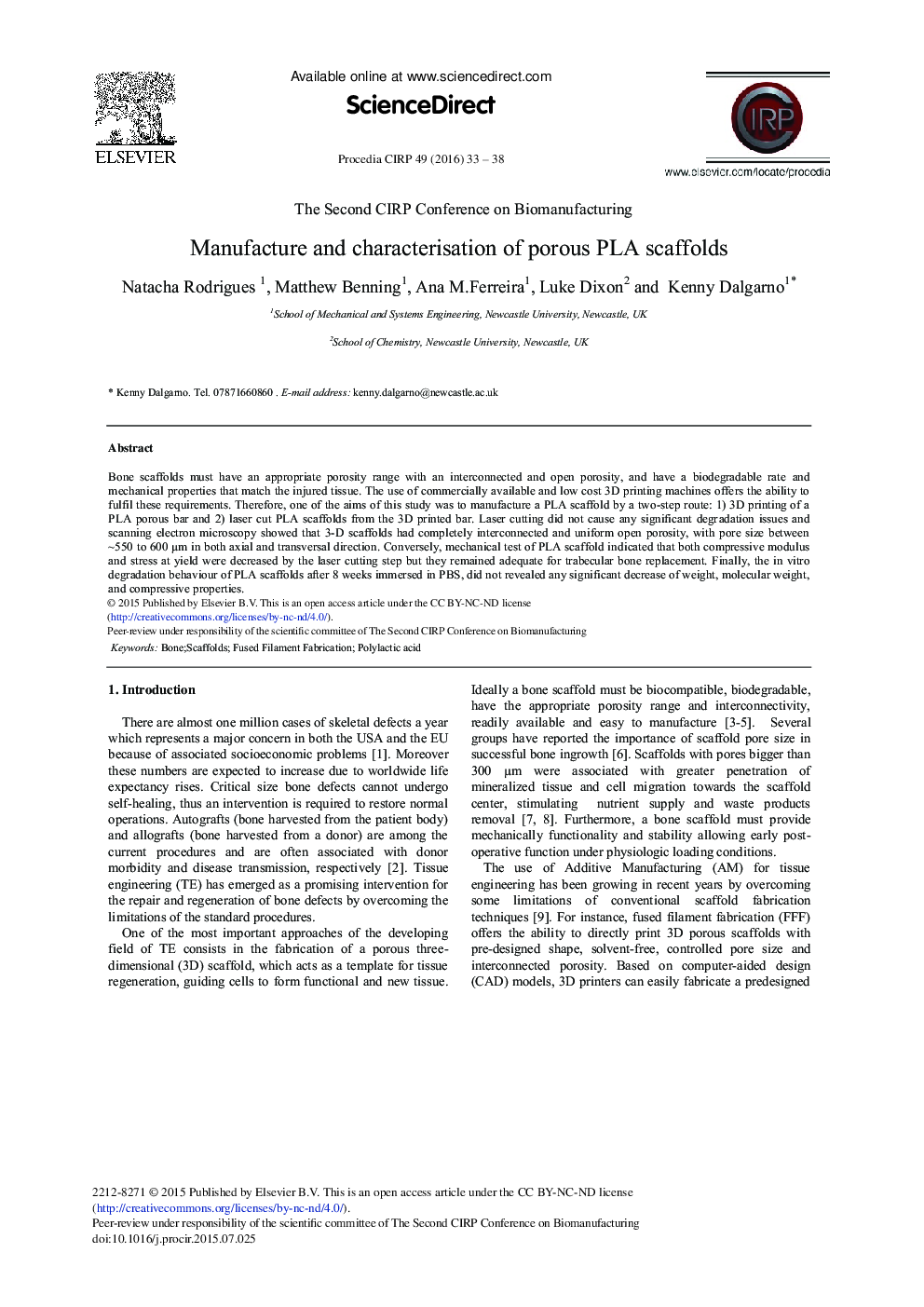| Article ID | Journal | Published Year | Pages | File Type |
|---|---|---|---|---|
| 1698224 | Procedia CIRP | 2016 | 6 Pages |
Bone scaffolds must have an appropriate porosity range with an interconnected and open porosity, and have a biodegradable rate and mechanical properties that match the injured tissue. The use of commercially available and low cost 3D printing machines offers the ability to fulfil these requirements. Therefore, one of the aims of this study was to manufacture a PLA scaffold by a two-step route: 1) 3D printing of a PLA porous bar and 2) laser cut PLA scaffolds from the 3D printed bar. Laser cutting did not cause any significant degradation issues and scanning electron microscopy showed that 3-D scaffolds had completely interconnected and uniform open porosity, with pore size between ∼550 to 600 μm in both axial and transversal direction. Conversely, mechanical test of PLA scaffold indicated that both compressive modulus and stress at yield were decreased by the laser cutting step but they remained adequate for trabecular bone replacement. Finally, the in vitro degradation behaviour of PLA scaffolds after 8 weeks immersed in PBS, did not revealed any significant decrease of weight, molecular weight, and compressive properties.
